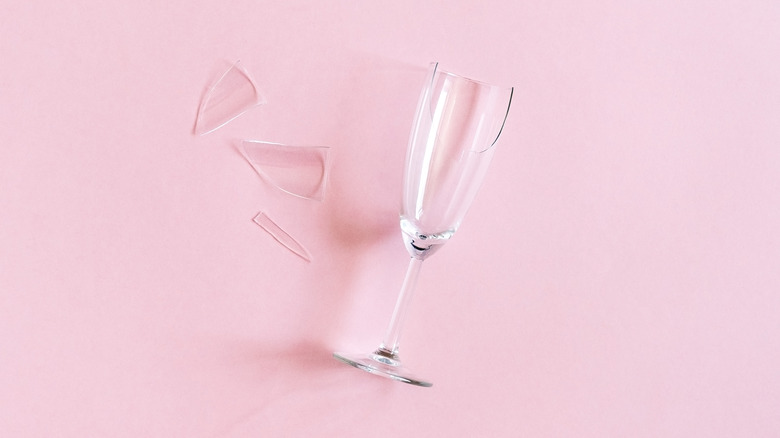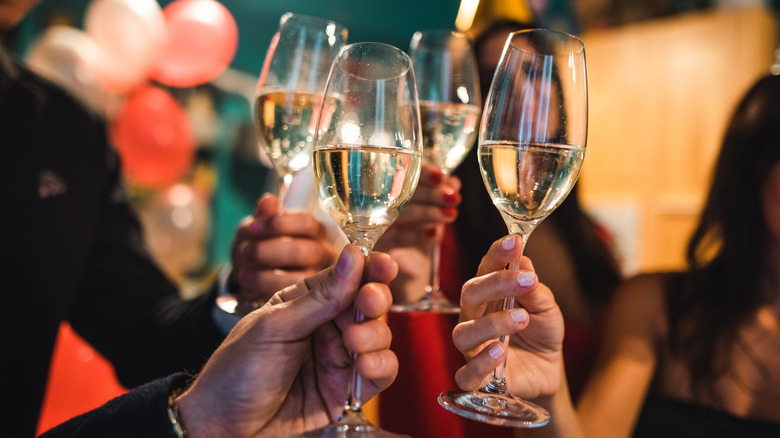Why Flutes Are The Worst Type Of Glass For Champagne
Champagne is serious business. Yes, it is associated with celebration in a bottle, the effervescence is refreshing and joyous, but along with that comes complex winemaking and aging that helps develop that bready taste of champagne we love so much. Sadly, these complexities are thrown to the wind when a flute glass enters the picture.
When champagne is poured in a flute, you are giving up most of its aromas and flavors. The glass is a poor choice for all sparkling wine because it does not allow the wine to breathe and show off those beautiful aromas. In the 1920s, coupes were a popular choice for champagne — which were no better, and we'll explain why in a moment. In the '50s, the flute took over as the glass of choice because it showcased the bubbles bobbing up and down. It was an aesthetic choice, but not one that let the wine shine.
The science
Wine needs to breathe. When you swirl wine in a glass, oxygen makes contact with the wine, allowing it to breathe and open up. The empty space at the top of the glass collects aromas, which is why you sniff wine after swirling it. The bulbous shape of a wine glass is designed to allow swirling. A flute glass is usually filled to the brim and does not allow for swirling. The wine has no way of breathing, and you won't be able to smell any intricate aromas. Coupes are no better. They have a wide bowl that also does not allow for swirling. Try, and you'll have a major spill on your hands.
Champagne, cava, prosecco, and any other types of sparkling wines all go through extensive winemaking and aging processes that are generally more labor-intensive than still wine. Those made with the traditional method go through fermentation twice to develop bubbles. There are layers of flavors and aromas that develop in sparkling wine that are lost if they are not served in the right glassware. Champagne can develop gorgeous aromas of dried apricot, banana, fresh brioche, and bruised apple with age. Prosecco has fresh apple, pear, and lime skin notes. But to fully enjoy these complexities, the wine needs wiggle room to breathe in a glass. And a flute is a tight squeeze.
The correct serving
Serve sparkling wine in a basic white wine glass, very chilled, and pour the same amount as any other wine, which is 3 to 5 ounces. A red wine glass will be too large for bubbly because the wine will get too much oxygen contact and the delicate aromas will get lost. Swirling sparkling wine will not dissipate all its bubbles. In fact, some sparkling wines are decanted so enough oxygen contact can allow the wine to open up. Tulip glasses are also great for sparkling wine and only need to be filled halfway. Universal wine glasses can be used for most kinds of wine, including stills and sparkling.
Next time you're at a restaurant, order a glass of champagne and ask for it in a white wine glass. You may get a raised brow, but power through it and stick to your decision. The right glass will make all the difference. You're splurging on nice bubbly, you might as well enjoy it, too.


